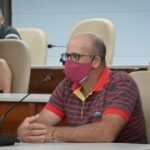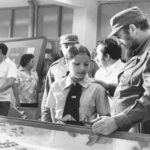Ten days after the 10-year war began, the city of Bayamo became the headquarters of the nascent Liberation Army, under the command of Carlos Manuel de Céspedes, Captain General of the Republic in Arms.
On January 12, 1869, a group of patriots, led by Pedro Figueredo, Perucho, author of the lyrics of La Bayamesa, decided to set fire to their homes and thus prevent Blas Villate, Count of Valmaseda and head of the Spanish troops, from taking the city.
The lawyer Don Pedro Maceo Infante, father of the patriot Francisco Maceo Osorio, began the great gesture by setting fire to his own house, where he had his pharmacy installed.
This example was multiplied by huts, residences, churches, public buildings. The whole city was on fire. Almost ten thousand Bayamese people left the city and went into the mountains.
In great pain, they left a burning town and, shortly after, almost totally reduced to ashes, a show of heroism and selflessness. Hence the name that many attribute to it: The torch city.
That gesture of losing everything they owned and then assuming a precarious life, demonstrated the highest place where many Cubans of the time placed their homeland and a practical expression of the forging of Cuban nationality.
This event still moves and is remembered every year on this date, especially in the beautiful city of Bayamo, a National Monument, which does not forget its historical roots and reissues the burning of the city that occurred 152 years ago, with multiple historical and cultural activities from the first days of January.
The burning of Bayamo is considered an act of high importance in the history of Cuba, proof that we Cubans are willing to carry the struggle to maintain our independence to the last consequences.




